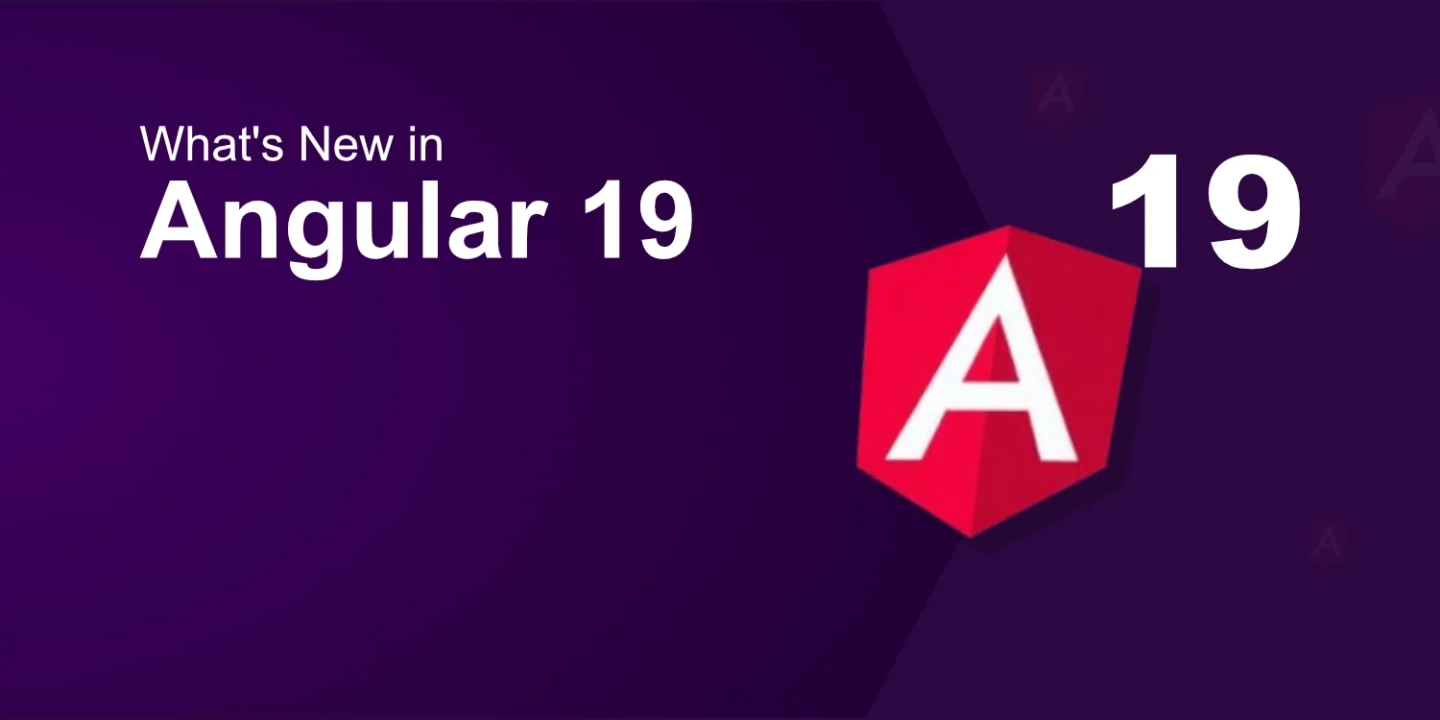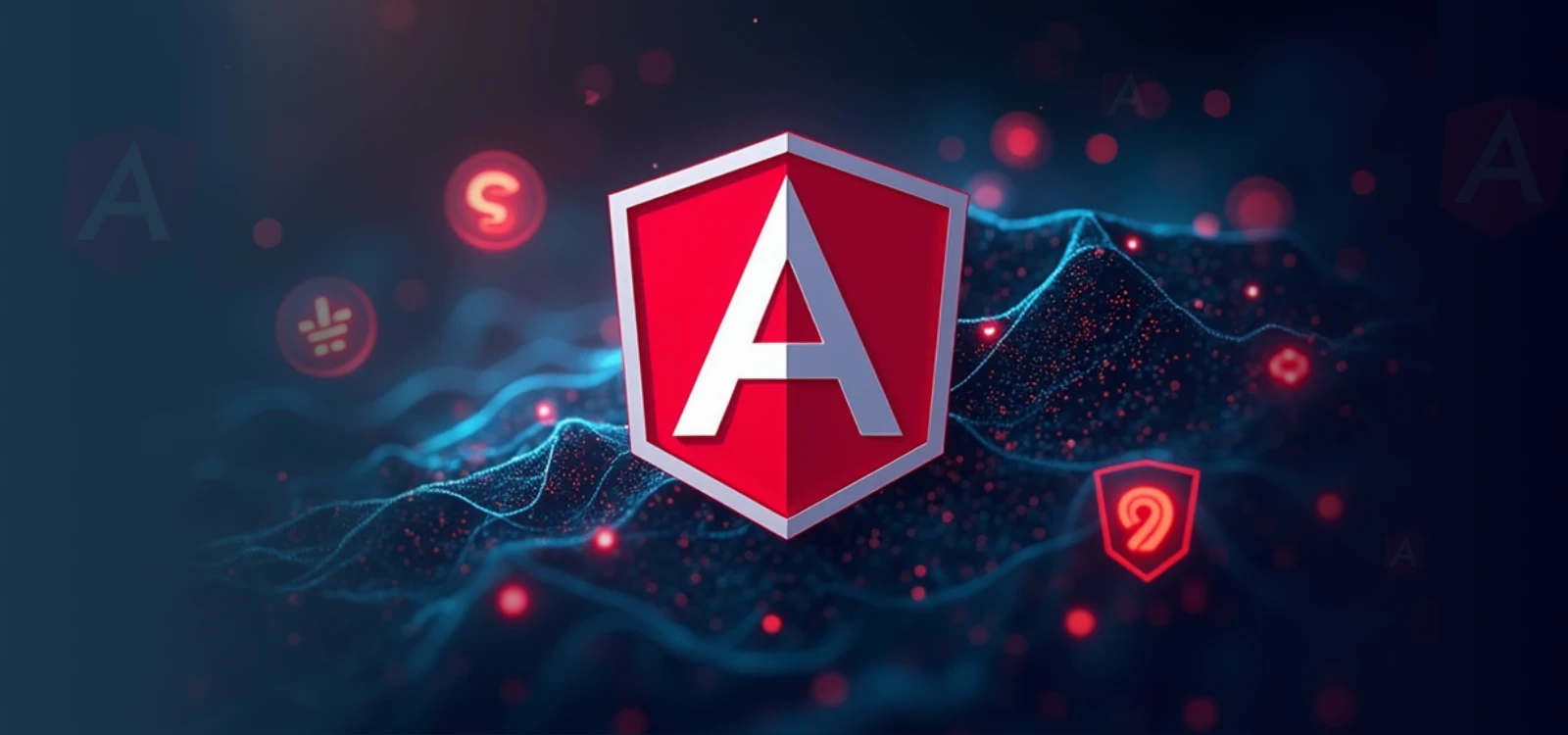

- Home
- Web Application
- What’s New in Angular 19 ...
Web applications are becoming increasingly complex in today’s digital landscape. Development teams face mounting challenges with performance bottlenecks and maintenance overhead. The need for robust, scalable solutions has never been more critical.
As Angular development experts, we understand the struggles of managing large-scale applications effectively. Teams wrestle with slow build times and complex dependency management. Angular into modern development workflows addresses these critical pain points.
The framework’s enhanced developer productivity features and application performance improvements emerge as game-changing solutions. Build optimization capabilities significantly streamline development processes. This comprehensive guide explores Angular 19’s groundbreaking features, performance enhancements, tooling improvements, and migration considerations that revolutionize frontend development workflows.
Core Features in Angular 19 New Features
Standalone Components as Default
Angular 19 revolutionizes component development by making standalone components the standard approach. Developers can now create components without explicitly declaring ‘standalone: true’ in decorators. The removal of this mandatory declaration streamlines the entire development workflow.
- Components automatically function as standalone units without additional configuration steps
- Modules integrate seamlessly with the lazy loading system for optimized performance
- Developers experience reduced setup time when creating new project components
- The simplified structure makes it easier to maintain and scale applications
The improved component architecture promotes cleaner code organization and better development practices. This significant change aligns with Angular’s commitment to reducing boilerplate and enhancing developer experience.
Angular 19 New Features: Signals and Reactivity
The latest framework update transforms how developers handle state management and data flow. Angular 19 New Features bring significant improvements to signal implementation and reactive programming.
- Advanced linked Signal feature enables seamless coordination between different application states
- Built-in signal operators streamline complex state transformations across components
- Enhanced debugging capabilities help track signal changes throughout the application
- Reduced Zone.js dependency results in improved application performance
The refined signal architecture allows developers to manage application states with precision. These enhancements create a more intuitive approach to handling reactive data streams.

Performance Optimization
Angular Web Development Services: Build and Deployment
The build system receives substantial upgrades focused on speed and efficiency improvements. Development teams can now leverage these changes through Angular Web Development Services.
- Advanced tree shaking removes unused code modules during the production build process
- Incremental builds detect and compile only modified files, reducing overall build time
- Enhanced error messages provide clearer insights into build and deployment issues
- New optimization techniques decrease the final bundle size substantially
Modern applications demand faster deployment cycles and optimized production builds. The refined build pipeline introduces smarter caching mechanisms for repeated compilations.
These optimization features ensure developers can maintain high performance standards in production.
Hydration and SSR
Server-side rendering capabilities have evolved to deliver superior performance and user experience. The hydration process now selectively reactivates components based on user interaction patterns.
- Partial hydration enables components to activate only when they enter the viewport
- The incremental approach prioritizes critical components for immediate user interaction first
- Event replay mechanisms preserve user actions during the server-to-client transition phase
- Optimized i18n blocks reduce the initial bundle size for multilingual applications
The enhanced hydration strategy minimizes client-side JavaScript execution during page loads. These improvements result in faster page interactivity and smoother user experiences.
State Management
The framework introduces powerful updates to handle complex application states more efficiently. Developers can now track state changes without relying on traditional Zone.js mechanisms.
- Signal-based debugging tools provide detailed insights into state mutations and updates
- Applications benefit from reduced bundle sizes through optimized state management code
- Performance monitoring tools track state changes with minimal runtime overhead
- Zoneless detection improves application responsiveness by reducing change detection cycles
The refined state architecture enables precise control over component update cycles. These enhancements create a more maintainable and performant foundation for large applications.
Advanced Development Tools
Custom angular development services: Integration Solutions
Data integration capabilities expand with new APIs for handling complex resource management. Modern applications require sophisticated approaches to manage diverse data sources efficiently.
- Resource and rxResource APIs streamline data fetching across different application layers
- Developers can now switch seamlessly between Promise-based and Observable-based data flows
- Built-in status tracking provides real-time insights into data loading states
- The unified retrieval system simplifies error handling and cache management
These improvements establish a more robust foundation for handling application data flows. The enhanced integration tools support both traditional HTTP requests and reactive streams.
Resource management becomes more intuitive with these comprehensive data handling solutions.
Angular Web Development Services: Modern Tooling
The development ecosystem evolves with sophisticated tools for enhanced project management. Angular Web Development Services introduce streamlined approaches to building complex applications.
- Advanced CLI capabilities enable custom configurations for different deployment environments
- Build output customization allows developers to generate specialized production bundles
- Improved workflow tools automate repetitive tasks and enhance development efficiency
- Optimized build cache reduces compilation times for subsequent development cycles
Modern tooling improvements transform how developers interact with the framework daily. These enhancements create a more efficient environment for managing large-scale applications.
The refined development experience supports faster iterations and improved code quality standards.
Framework Updates
Micro-Frontend Architecture
Development teams gain enhanced control over large-scale application architectures with improved modularity. The framework now supports sophisticated approaches to managing independent application segments.
- Dynamic rendering capabilities allow selective loading of micro-frontend components on demand
- Independent modules maintain their state while integrating seamlessly with the main application
- Global state management facilitates communication between different micro-frontend components effectively
- Streamlined deployment pipelines enable independent releases for each micro-frontend segment
These architectural improvements provide better scalability for enterprise-level applications. The enhanced micro frontend development support allows teams to develop and maintain features independently.
The framework ensures consistent performance across all integrated micro-frontend components.
Angular Material Updates
Material components receive comprehensive updates focused on modern design principles and functionality. The refreshed component library introduces enhanced interactions that align with current UX trends.
- Optimized style bundles reduce the overall CSS footprint in production builds
- Enhanced accessibility features ensure compliance with WCAG 2.1 level AA standards
- Component interactions now support advanced animation and state transition capabilities
- UI elements incorporate refined visual designs with improved touch device support
The material system evolution brings better performance through selective style loading. These improvements establish a more cohesive foundation for building accessible applications.
The updated design system provides developers with more flexible customization options.
Best Practices and Migration
Upgrade Considerations
Moving to Angular 19 requires careful planning to ensure a smooth transition. Development teams should evaluate their current application architecture before initiating the upgrade.
- Legacy components need assessment for compatibility with the new standalone architecture
- Applications heavily dependent on Zone.js require strategic planning for zoneless migration
- Teams should update their testing strategies to accommodate new signal-based features
- Build pipelines must adapt to support the enhanced compilation and deployment processes
The migration process focuses on identifying and resolving potential compatibility issues early. Teams should prioritize updating critical application components before moving to peripheral features.
These considerations help ensure successful upgrades while maintaining application stability throughout the process. The framework provides comprehensive documentation to support teams during their migration journey.
Breaking Changes
Version 19 introduces significant modifications that impact existing Angular application architectures. Development teams need to understand these changes to maintain application functionality.
- The removal of NgModule declarations affects component organization and dependency management
- Legacy change detection mechanisms require updates to support the new zoneless approach
- Deprecated APIs from previous versions have been completely removed in v19
- Component lifecycle hooks now interact differently with the signal-based reactive system
Teams should conduct thorough application audits to identify affected code sections. The transition requires careful attention to deprecated features and updated implementation patterns.
Understanding these breaking changes helps developers plan effective migration strategies. The framework documentation provides detailed guidance for addressing each significant modification.
Implementation Guidelines
Successful adoption of Angular 19 features requires a structured approach to implementation. Teams should establish clear migration paths before integrating new framework capabilities.
- Projects should implement standalone components gradually, starting with newer feature modules
- Signal-based state management needs careful planning to ensure optimal performance benefits
- Development teams must update their testing strategies for the new reactive patterns
- Code reviews should specifically focus on proper implementation of new APIs
Organizations benefit from creating detailed documentation for their specific migration processes. The implementation strategy should prioritize critical application features over peripheral components.
These guidelines help teams maintain consistent development practices across different project phases. Proper planning ensures smooth transitions while maximizing the benefits of new features.
Conclusion
Angular 19 represents a significant evolution in modern web development practices. Business seeking Custom Angular Development Services gain powerful tools for enterprise applications.
- Standalone components and enhanced signals revolutionize state management in applications
- Performance optimizations deliver substantial improvements in application load times
- Modern tooling capabilities streamline development workflows across large-scale projects
- Migration paths provide clear directions for updating existing applications
These advancements demonstrate Angular’s commitment to developer productivity and application performance. The framework continues to evolve, meeting the demands of enterprise-level applications.
The comprehensive updates establish a strong foundation for future web development projects.
Adit Sheth
Adit Seth, CTO of Virtual Coders, is an accomplished engineer focused on software development and emerging technologies. His articles cover innovative coding practices and tech advancements, aiming to educate and inspire readers in the digital landscape.
Search
Recent Post
Top 10 Most Essential Dot Net Development
- 3 days ago
- 6 min read
How To Hire A Dedicated Angular JS
- 2 weeks ago
- 8 min read
Hire Dedicated Dot Net Developers – A
- 1 month ago
- 13 min read







